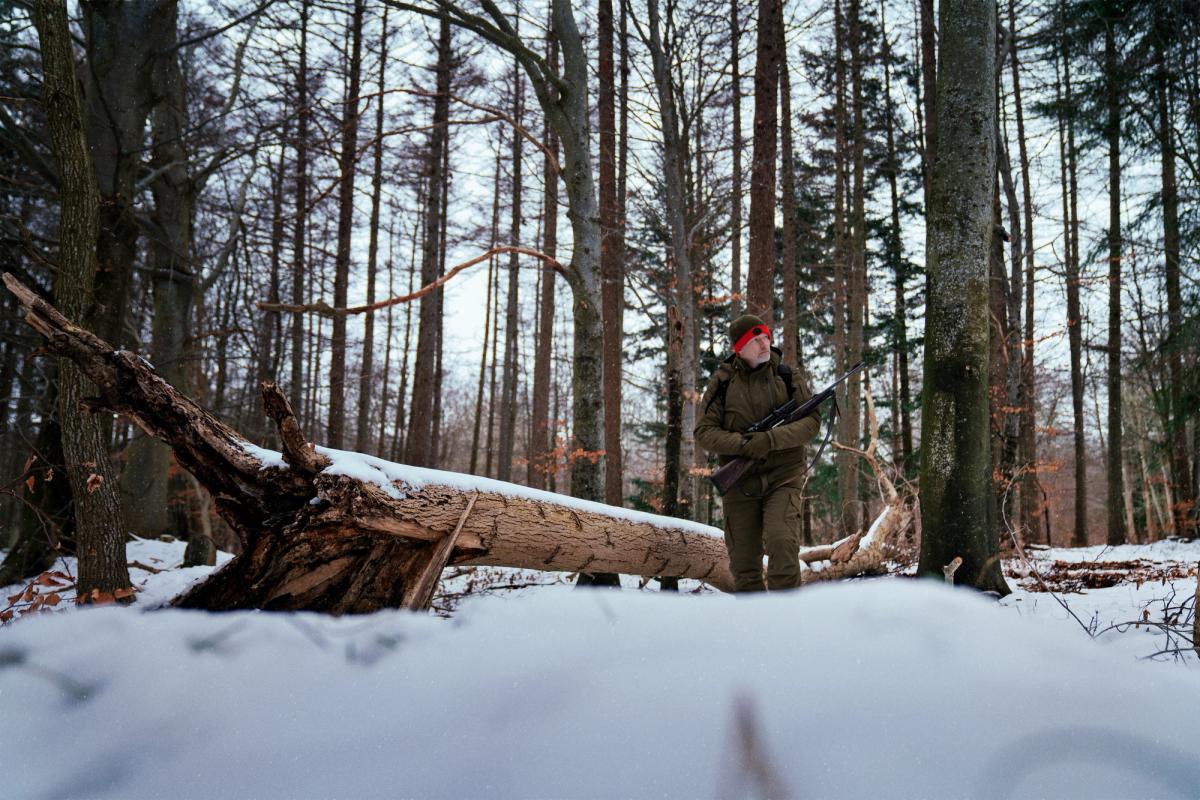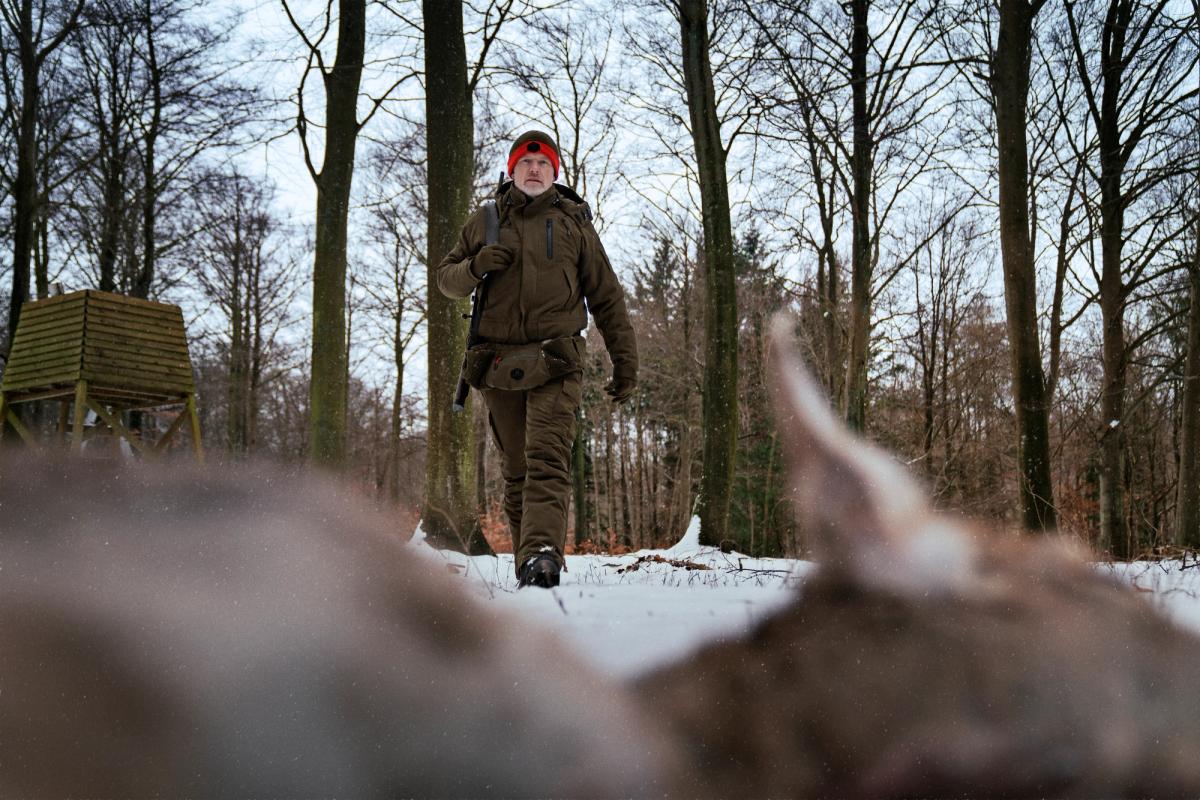Driven Hunt
Here’s how to layer up for high seat hunting
Getting dressed properly for a high seat hunting can be a difficult task. sometimes a mistake, disregarding conditions, a mere forgetfulness or rush during packing can ruin your hunt.
First, let's divide the high seat hunting into two groups - the first (the easy one) is what we would call individual hunting. You go out to the forest alone, you do not belong to any organized group. You can decide when to start your hunt and when to end it. If you feel tired of sitting for a long time, or if you feel cold or experience a discomfort and don’t want to continue, you can quit and go home any time. No problem.
Moreover, unlike active hunting such as stalking, you don't need to worry too much about sweating (unless of course you overdo the thickness of your clothes or set a crazy pace on your way to the high seat) or overcoming tough weather conditions. Most of the high seats prepared for individual hunting are solid towers - they have walls that will protect you from the possible wind and a roof that protects you from rain.
So - you can dress as you like. You can wear your favorite fleece, loden, tweed. Most of the time, you don't really need to worry about functionality, but rather style - if that turns you on. Consequences of a mistake and inappropriate choice of clothes are rarely serious. Usually, you have a lot of options - change your strategy and go for a short stalk to warm up a bit, you return to the car for something warmer or, as I mentioned, just call it a day and go home.
“You could spend up to several hours motionless at the stand. Long exposure makes getting cold very easy even in mild conditions, not to mention when the weather turns really ugly.”
//Things get tricky on a driven hunt//
However, the situation is completely different when you hunt in a group - as it is most often in the case of driven hunts, but of course not only them.
First of all, you do not decide about the course of the hunt. You are almost always subordinate to the leader - he or she decides how long the drive will take, and you are not allowed to leave your position. It does not matter that you are chattering with cold teeth or soaking wet. Safety and discipline at such events are the most important issues - you sit until the end, no exceptions.
Secondly, you probably won't be able to choose your position. You can draw it earlier or during the hunt, it will be shown to you by the hunting leader. It may happen that it will be a tall tower with all the comforts, but most likely you will take a seat on a low platform that will not protect you from bad weather in any way.
Thirdly, you don't know how long you'll have to stay put. Some drives are short - half an hour, maybe an hour is all the beaters need to pass. The hunters will be picked up shortly, regroup go to a new location and start the hunt will over. However, large areas are most often preferred so that the game is only slightly pushed out of the hiding. It moves slower and stops frequently to see what's going on. This causes the hunting pace to slow down. You could spend up to several hours motionless at the stand. Long exposure makes getting cold very easy even in mild conditions, not to mention when the weather turns really ugly.


How to layer up for high seat hunting, then?
- First of all - take more than you think you need. You won't be walking far, you will often be able to use the lift all the way to the stand. So you don't have to worry about getting tired of carrying it. Put a spare layer in the backpack - a sweatshirt, vest, warm scarf, or a thick neck gaiter. If you get cold, you will feel the difference quickly.
- Make sure that the outer layer protects against both moisture and wind. These two elements can quickly take away the thermal comfort. Thick layers underneath are useless if water and cool air penetrate through them.
- Choose clothes that have long sleeves. Remember that you will spend most of the time sitting. Bent elbows and knees cause the fabric to curl, exposing the wrists and ankles. Additionally, choose rather loose clothes - additional space will allow you to put on one more layer, and also store more air, which is a great insulator. Fashion nowadays suggests something else - tight fitting clothing and exposed cuffs. This is poor advice for hunting in demanding conditions.
- For the same reason, make sure you have a little more room for your toes in the shoes, especially as you will most likely want to wear thicker socks. The squeeze in the shoe means that it will be harder to move your toes and warm them up a bit, and - again, less insulating air - it is much easier to get painfully cold.
- Speaking of footwear, go for boots or ankle shoes at least, for the same reason as trousers. When you sit down, the cuffs will go up and it's easy for cold air to enter underneath. Second - you have to be careful that they do not get wet, and what is even worse - snow or water does not get inside.
- Choose a longer jacket and pants with a higher waist (preferably with braces). It's about protecting the kidneys - it's important to make sure that the lower back is well protected. When you sit down or bend down, the material always curls or rolls down. Naked back in the cold is asking for serious trouble.
- Have something with you to isolate your behind from the cold bench. It can be a special pad, a foam seat or even a gun slip, something like that. It all works and can work wonders. Not only is sitting more comfortable, but it allows you to protect another part of the body that you do not want to get cold.
- No one needs to be reminded of the hat, of course. But it's worth choosing a model that is easy to tuck to reveal your ears. The sounds of the approaching game, heard early enough, will allow you to prepare yourself. Take the right position, turn around earlier so as not to scare it when it is close.
- Always carry gloves. They are easy to put into a backpack or even a pocket if it's warm and you don't need them. However, when it gets colder, they can save the hunt. Chilled feet or ears aren't that big of a deal yet. But it will be very difficult to shoot well with cold and stiff hands when the time comes. In addition, adrenaline and a long time standing still make us cool even faster. It happened to me that my hands turned blue with cold during a Summer roe deer hunt, when I watched a promising buck with binoculars. There is another reason why you should have gloves with you all year round - our hands are usually clearly visible against the background of our clothes and surroundings. Moreover, they usually make the fastest and broadest movements. And these are exceptionally easy to spot by game, even from a distance.
- Wear some clothing in safety colors. Hat, gloves, scarf, vest. In many countries, this is an obligation, but don't just rely on regulations. Blazing orange or red are visible to humans from a great distance, game does not distinguish them. Nothing can make a hunt safer than knowing where your neighbors are.


Use layers
I have left a separate and important piece of advice for last: Use layers. A few thin pieces of clothing underneath a jacket usually work better than one thick insulation. Besides - you can adapt to changing conditions or changing well-being.
It's easy to take off your blouse or put on the warmer sweater you have in your backpack. However, if all your options are to wear a thick jacket or wear nothing but underwear, then you have a problem. Long-sleeve t-shirt, long johns, flannel shirt, gloves, a spare pair of socks, fleece jacket - all these do not take up a lot of space in a backpack and are easy to put on if needed. And finally - the goodness of heated clothing must not be forgotten – being able to adjust the warmth of a layer close to your body when it gets ugly outside is something you will always appreciate.

// Written in coporation with Lukasz Dzierzanowski, who is an author, hunter, blood tracker and gun enthusiast from Poland. When not hunting, he teaches Computer Engineering at a technical university in his hometown of Opole. Photos by Pulsar and Härkila //